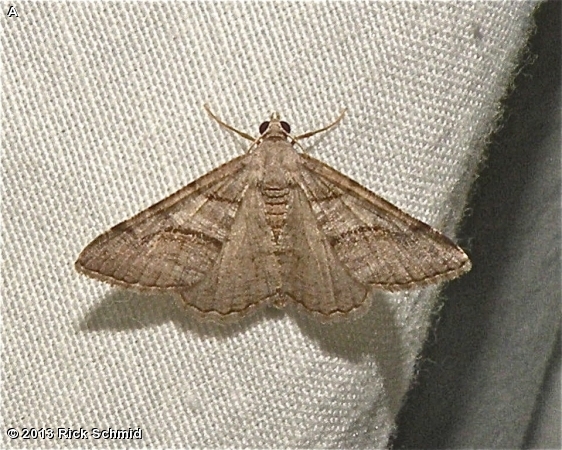
CURVE-LINED ANGLE
Digrammia continuata
GEOMETRID MOTH FAMILY (Geometridae)
The Curve-lined Angle moth has a wingspan of about 1 inch. The forewing is gray-brown with dark brown curving antemedial and postmedial lines. A diffuse median band is present sometimes. The area between the antemedial and postmedial lines is lighter in color than the surrounding area forming a wide, light band. The hindwing is plain gray-brown. Both wings have a scalloped, black terminal line. The abdomen is brown with fine black bands. The mature larva grows to about 1.25 inches. It is green with broken white dashes.
The frequency of occurrence at Fontenelle Forest and Neale Woods is not known. The individual shown here was photographed at Neale Woods in mid-September 2013 coming to artificial lights. Adults fly from April to September.
The larval food plants are white cedar and red cedar. The Angle caterpillars that feed on cedar are almost perfectly camoflaged because the broken white lines imitate the short scalelike leaves on which they feed (“Caterpillars of Eastern North America,” David L. Wagner). The larvae are present from June to November. The species overwinters as a pupa in soil or leaf litter. Another common name is Orillia Angle Moth
Disclaimer: The content of NatureSearch is provided by dedicated volunteer Naturalists of Fontenelle Forest who strive to provide the most accurate information available. Contributors of the images retain their copyrights. The point of contact for this page is: Babs Padelford.
